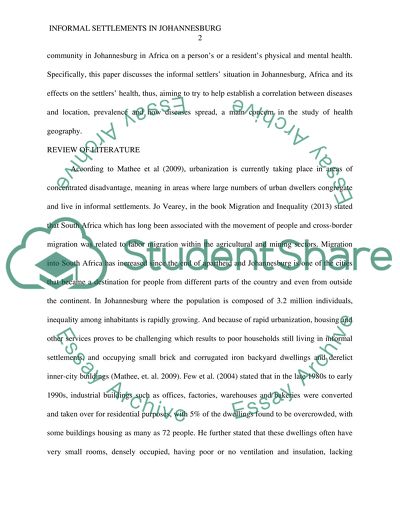Cite this document
(“Informal Settlement in Johannesburg Research Paper”, n.d.)
Informal Settlement in Johannesburg Research Paper. Retrieved from https://studentshare.org/geography/1482821-informal-settlement-in-johannesburg
Informal Settlement in Johannesburg Research Paper. Retrieved from https://studentshare.org/geography/1482821-informal-settlement-in-johannesburg
(Informal Settlement in Johannesburg Research Paper)
Informal Settlement in Johannesburg Research Paper. https://studentshare.org/geography/1482821-informal-settlement-in-johannesburg.
Informal Settlement in Johannesburg Research Paper. https://studentshare.org/geography/1482821-informal-settlement-in-johannesburg.
“Informal Settlement in Johannesburg Research Paper”, n.d. https://studentshare.org/geography/1482821-informal-settlement-in-johannesburg.


